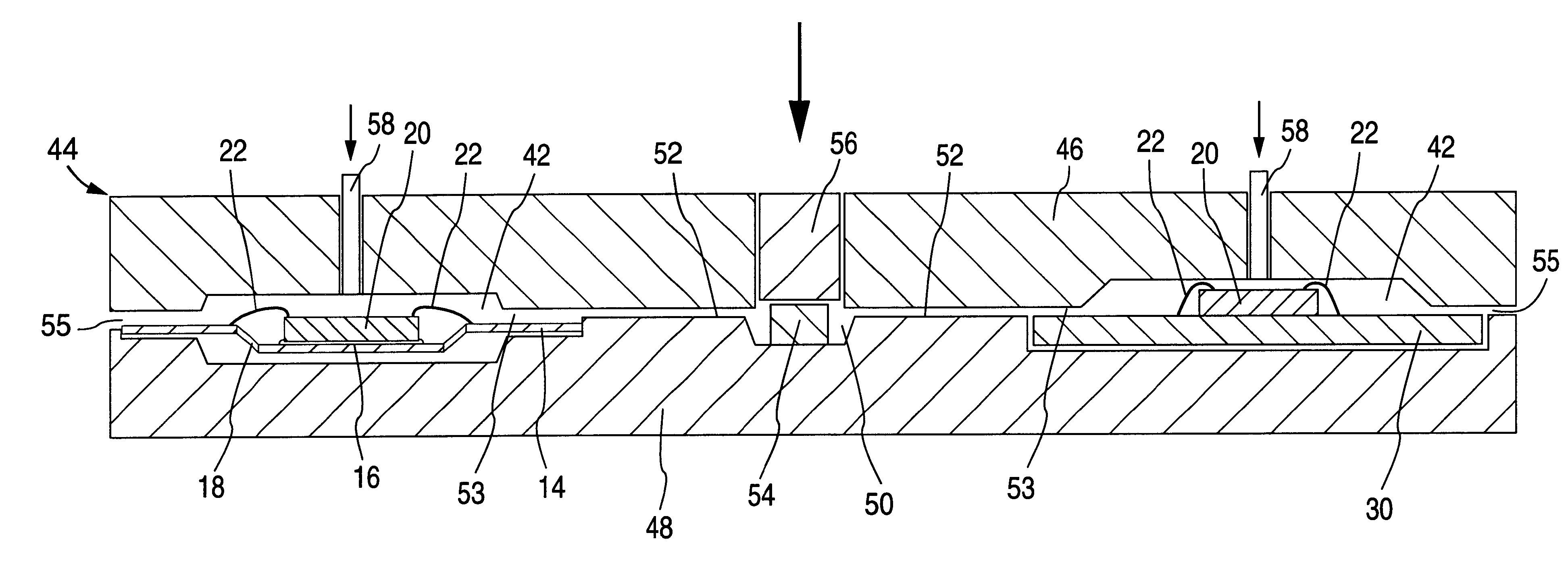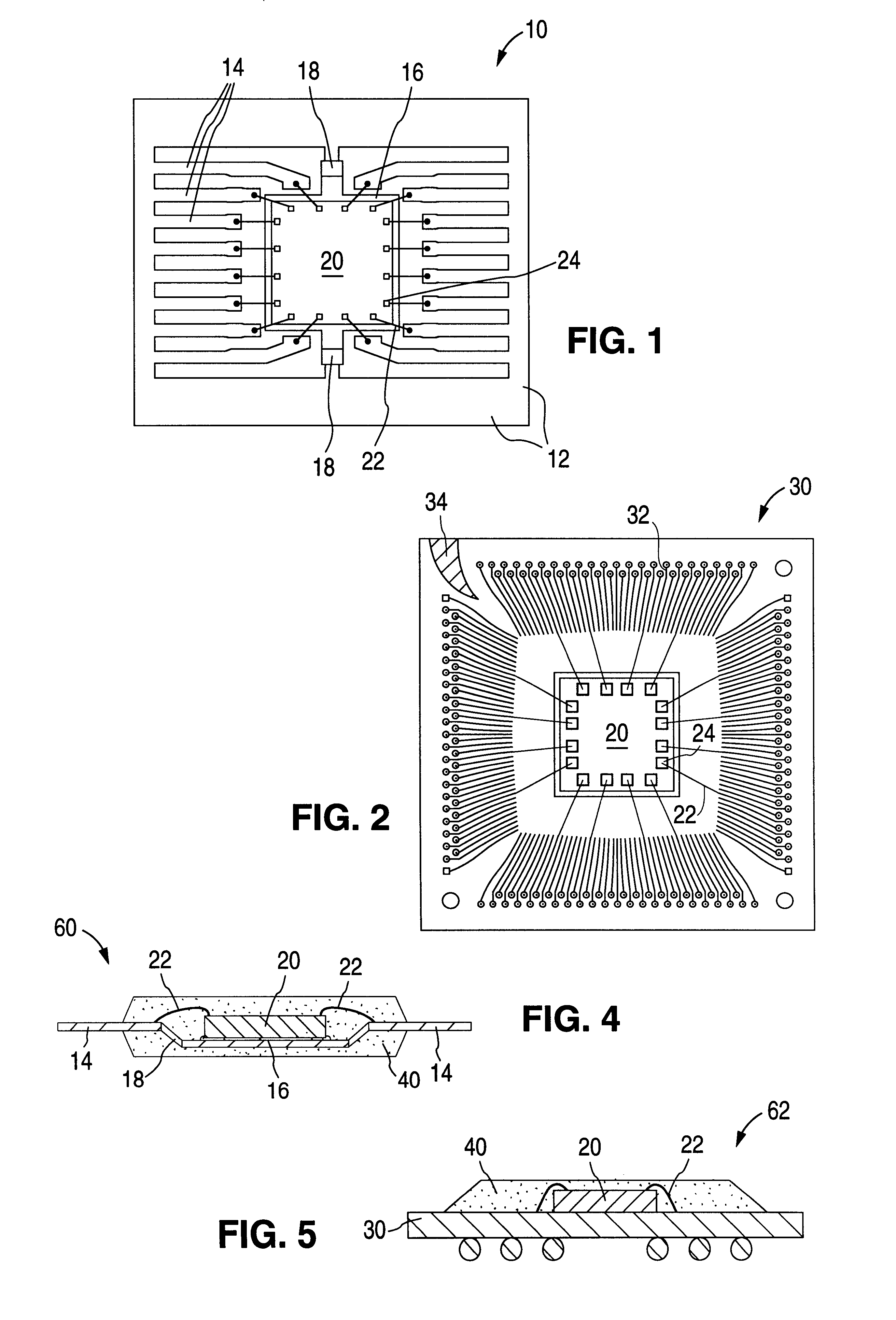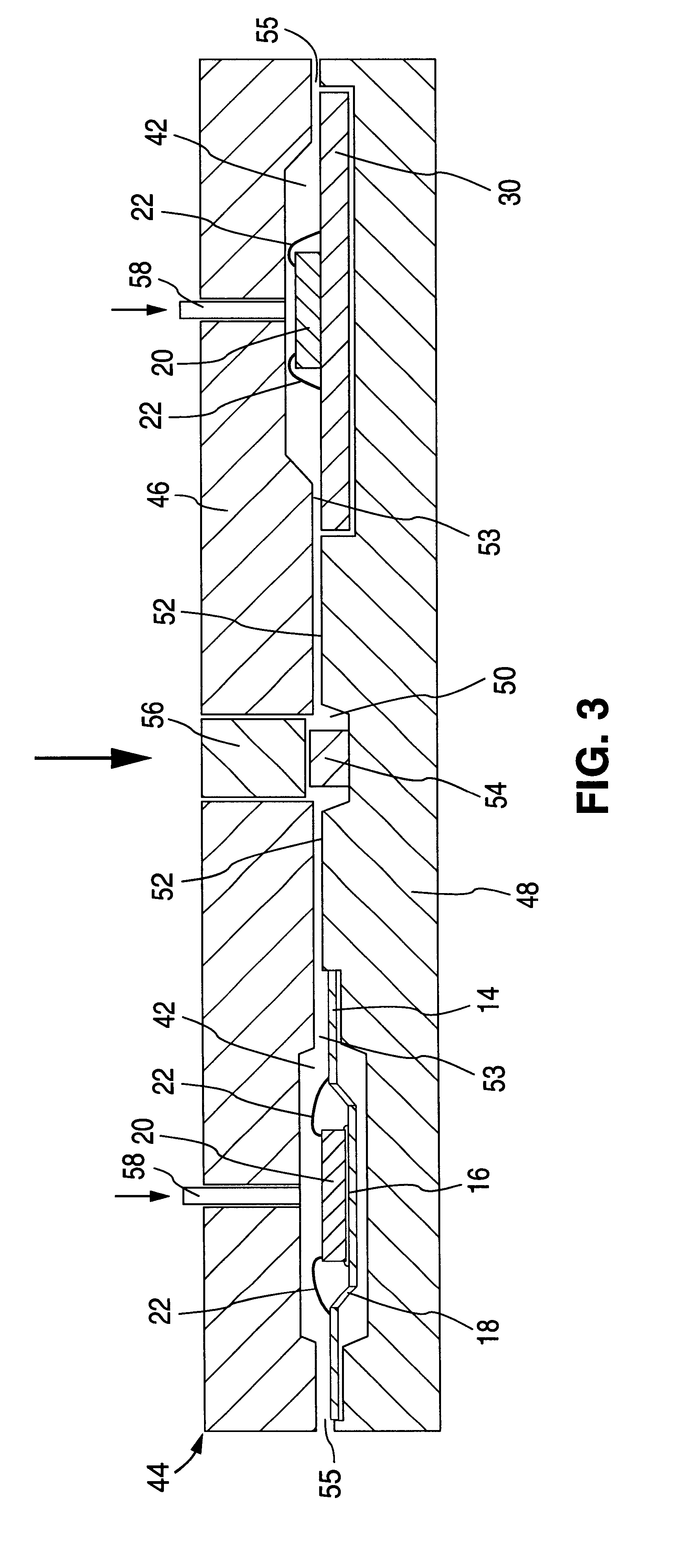Method of molding plastic semiconductor packages
a technology of semiconductor packaging and plastic body, which is applied in the field of semiconductor packaging, can solve the problems of molding compound to adhere, small and fragile, and large amount of heat generation
- Summary
- Abstract
- Description
- Claims
- Application Information
AI Technical Summary
Benefits of technology
Problems solved by technology
Method used
Image
Examples
Embodiment Construction
FIGS. 1, 3 and 4 show the sequential stages in the manufacture of a typical leadframe type of semiconductor package, while FIGS. 2, 3 and 5 show similar stages in the manufacture of a typical grid array package.
In FIG. 1, a top plan view of a leadframe 10 is shown. The metal lead-frame 10 comprises a rectangular frame 12 having a central region and a matrix of leads 14 extending from it inwardly toward the central region. A die mounting pad 16 is supported in the central region of the frame by two or more tie-bars 18. A semiconductor die 20 is mounted by an adhesive to the upper surface of the die mounting pad 16 and is electrically connected to selected ones of the inner portions of the leads 14 by a plurality of fine, conductive bonding wires 22 that are bonded at their opposite ends to pads 24 on the die and selected ones of the leads 14, respectively.
A top plan view of a substrate 30 used in the manufacture of a typical grid array package is shown in FIG. 2. The substrate 30 com...
PUM
| Property | Measurement | Unit |
|---|---|---|
| Thickness | aaaaa | aaaaa |
| Electrical resistance | aaaaa | aaaaa |
| Adhesion strength | aaaaa | aaaaa |
Abstract
Description
Claims
Application Information
 Login to View More
Login to View More - R&D
- Intellectual Property
- Life Sciences
- Materials
- Tech Scout
- Unparalleled Data Quality
- Higher Quality Content
- 60% Fewer Hallucinations
Browse by: Latest US Patents, China's latest patents, Technical Efficacy Thesaurus, Application Domain, Technology Topic, Popular Technical Reports.
© 2025 PatSnap. All rights reserved.Legal|Privacy policy|Modern Slavery Act Transparency Statement|Sitemap|About US| Contact US: help@patsnap.com



